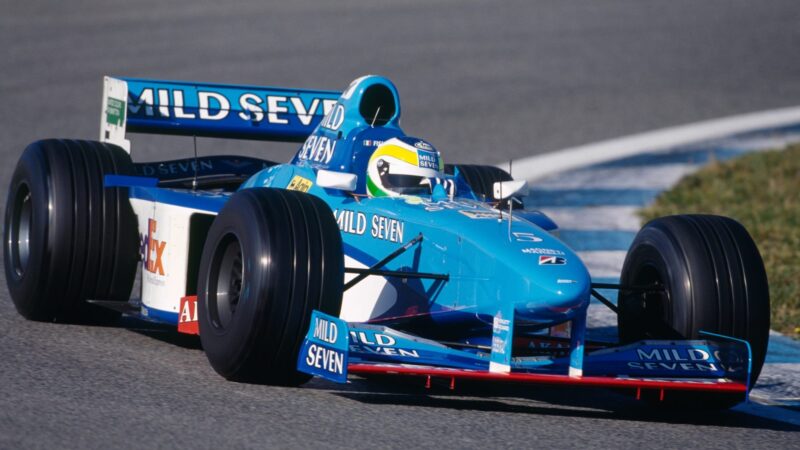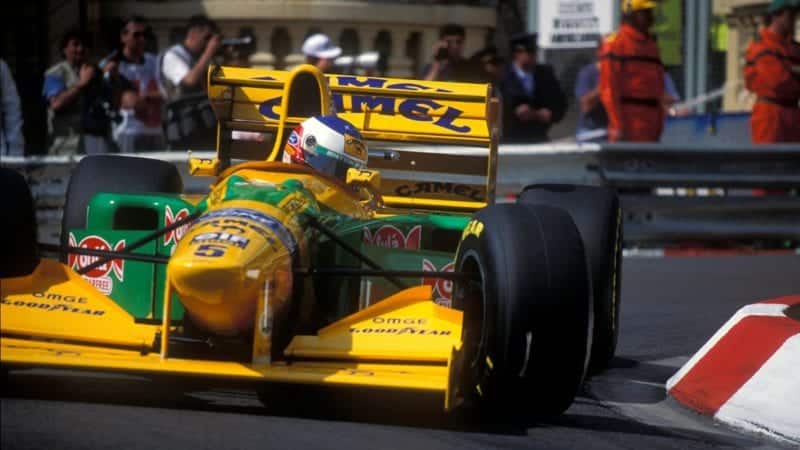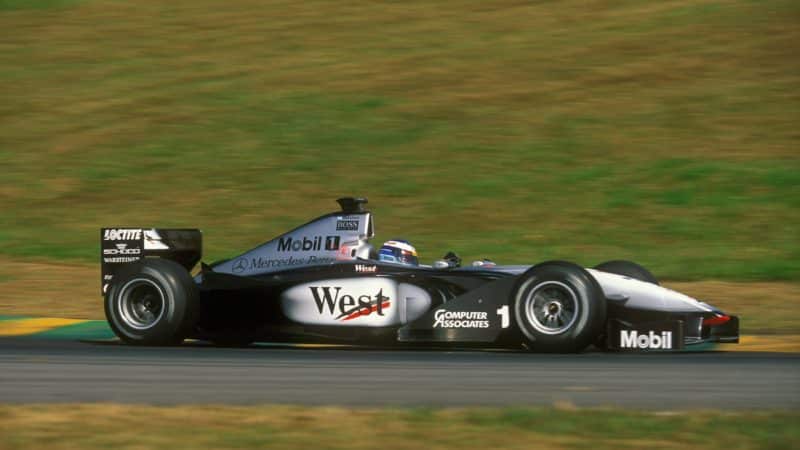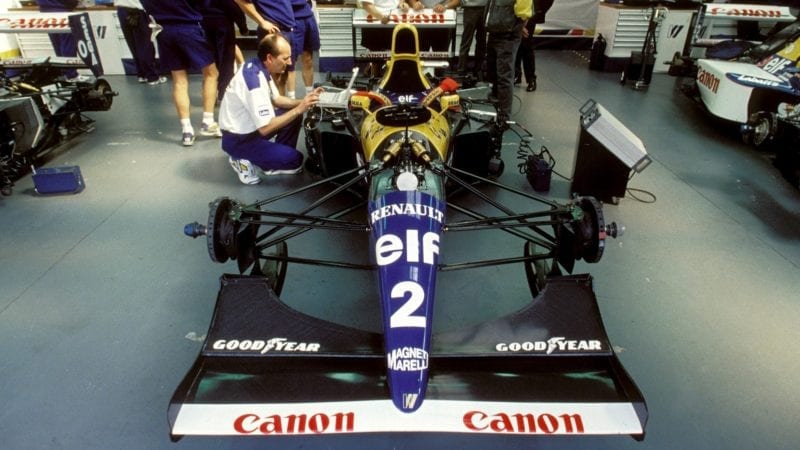“Coupled with that sort of expansion in budget. I guess the main reason for the expansion in budget wasn’t really the manufacturers – that was a bit later – it was much more the tobacco. So you know that was starting to really pump into the sport, the tobacco companies began to spend less and less on advertising in conventional areas so I think there was more money going into the sport. That allowed us to employ professional engineers, to buy the computers and software, set up R&D and spend a lot more money on windtunnel testing and things like that.”
All of these points combined and created the perfect storm for a technical revolution. With the level of engineers increasing and the greatest funding ever seen now available, F1 underwent a period of technological innovation not rivalled for some time, perhaps only by the recent turbo hybrid concept.
With relative regulatory freedom, innovations were concocted, earlier concepts redefined and speeds were increased again and again. That wasn’t limited to the top teams either. While of course the likes of Ferrari and McLaren had almost unlimited funding in comparison to the minnows of the F1 world, backmarkers could afford to get creative for their own versions of budding technology. Lotus for example was on its last legs and a shade of its former title-winning self by the ’90s yet even it gave its own spin on active suspension. Over at Benetton, the funds weren’t flowing quite as freely by the end of the decade, that mattered not to Symonds and Co.
“The amazing thing is what we did for very little money. Yeah, in our case, the active car we raced in ’93 had a very long gestation period because I’d started work on that car in the late ’80s, and then left Benetton to go and do the Reynard thing when Rory [Byrne] and myself, you know, didn’t get along with [John] Barnard.
“Then I came back and did the active cars again, picked up the programmes after a little bit of a hiatus. That was still done on a shoestring. The four-wheel steer actually is an even better example because the four-wheel steer I’d been playing around with it for a bit. I’d done all the modelling, like part of my team to set up a few sorts of tests early ’93 in the lab and what have you.
“When you look at the team now with 500-600 people, most of those people are engineers and finding all these tiny little incremental improvements”
“In my mind, it was going to be introduced for ’94. Then, in Canada in ’93, the FIA decided that the active suspension sort of stuff was illegal. I remember coming back from Canada, and Ross [Brawn] was technical director then, and Ross was going on holiday straight off the week after Canada and I remember saying, ‘Well what are we going to do with this four-wheel steer project? It’s showing an awful lot of promise’ and Ross said, ‘Well when I get back from holiday give me a plan.’ Actually what I did was I built it while he was on holiday.
“If I wait till he comes back, we’re not going to get it on the car. So we built it we raced it in the last three or four races. That was from a ‘let’s get this thing out of the R&D lab and onto the car, go out testing and race it by October’ or whatever was. We were able to work incredibly quickly. The latter part of the decade, you know, in ’99, we were really on a shoestring budget at that time. The good times of ’94, ’95 had gone. We were paying an absolute fortune for engines.
“Benetton had decided they wanted out and I was trying to get Renault involved with us again because, by this time of course, I was technical director. Our budget was minute in ’99, yet we did the front-torque transfer. We did a twin-clutch gearbox. And these were done on a tiny budget. We should be pretty proud of what we achieved, all of the teams. Our team then was probably 300 people. When you look at the team now with 500-600 people, those additional people on production people not many of them are pen pushers, you know, okay, maybe a few more HR people. The process is zero, but most of those people are engineers, people are working and finding all these tiny little incremental improvements.”

Benetton were still working on innovative braking systems after its championship heyday
Jerome Prevost/TempSport/Corbis/VCG via Getty Image
One particular piece of tech didn’t make it onto the Benetton though and it was an ingenious piece of work. Giancarlo Fisichella and Alexander Wurz could have had a unique braking system at their disposal for the 1998 season but thanks to an FIA rule clarification, the design didn’t make the cut.
“We didn’t race our sort of full Active Brake System which was quite a complex system. It altered the gain of the foot pedal to brake pressure depending on speed, and it also altered the bias. It didn’t actually do anti-lock in the same way that the front torque transfer didn’t do anti-lock because that had been banned in ’93, it made it quite difficult to lock the front brakes on turn-in.
“It was a great system, actually Swiss watch stuff. It was a hydroelectric control system on the pedal assembly and that effectively altered the ratio size so high speed you know that the driver just press lightly on the pedal and there was a lot of brake pressure and then he just kept his pressure constant and the control algorithms would then back off the brakes as the speed came down to stop and locking it would alter the bias, front to rear. It would sense when the car was turning in and alter the bias again. So yeah that was, that was a pretty neat system actually.
Innovations like McLaren’s extra pedal ‘brake-steer’ system or the Williams active suspension system are pointed to as the most notorious of the 1990s F1 tech inventions though, for Symonds, Benetton’s four-wheel steer system is the winner despite the more renowned inventions living on in the memory.
“My favourite is the four-wheel steer. It was an incredibly innovative closed-loop system. Most four-wheel steers are open-loop, at low speed they’ll counter steer and at high speed, they’ll pro-steer. This one says if the car was oversteering, understeering and what rate of turning was warranted.
“It was fully integrated with the active suspension. It had some really clever safety systems on it to capture hydraulic failures and stuff like that. It was a lovely bit of engineering and the control algorithm to this day I still think you could stick it on a road car and it’d be really good. I should write about it one day.”





